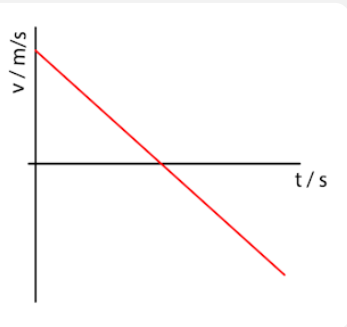Motion
1/11
There's no tags or description
Looks like no tags are added yet.
Name | Mastery | Learn | Test | Matching | Spaced |
|---|
No study sessions yet.
12 Terms
A tennis ball is hit horizontally and travels to a wall 10 metres away. Upon hitting the wall, the ball bounces back to its starting position. Calculate:
a) the horizontal distance travelled by the tennis ball
b) the horizontal displacement of the tennis ball
a.) Distance= 20m
b.) Displacement= 0m
A formula one car travels a displacement of +500 metres on a test circuit. It then reverses in the opposite direction for 800 metres.
Calculate the displacement of the car from the start position to its end position.
-300m
Displacement is a vector and therefore direction matters.
The 800m should therefore be regarded as negative.
+500-800= - 300m
Define the term speed
rate of change of distance per unit time.
Define the term displacement
shortest straight line distance and direction from an object’s starting point to its ending point, ignoring the path taken.
Define the term velocity
rate of change of displacement per unit time.
How to calculate average speed and average velocity ?
Average speed = total distance travelled / total time taken
Average velocity = total displacement / total time taken
Define the term acceleration
rate of change of velocity per unit time.
Define rate of change
Change in a quantity relative to another quantity
The gradient of a speed time graph =
The gradient of a velocity time graph =
The magnitude of acceleration (You’re not accounting for whether the object is speeding up in a forward or backward direction.)
The acceleration as a vector.
Define the term Instantaneous Speed
rate of change of distance a given instant.
Jack throws a ball upwards and catches it again. The acceleration is constant and (-), sketch the velocity time graph.
Velocity is (+) going up and (-) coming down.
